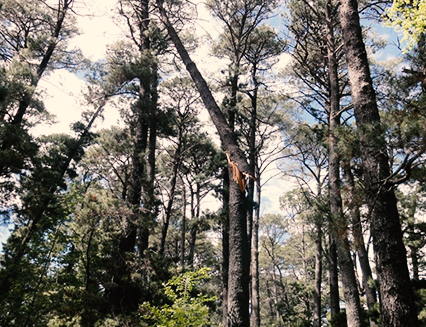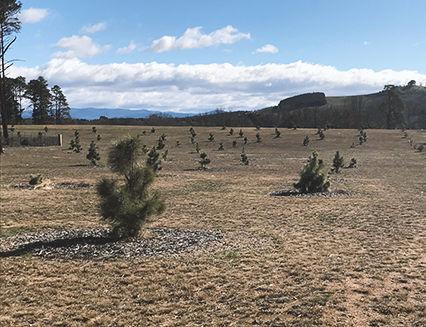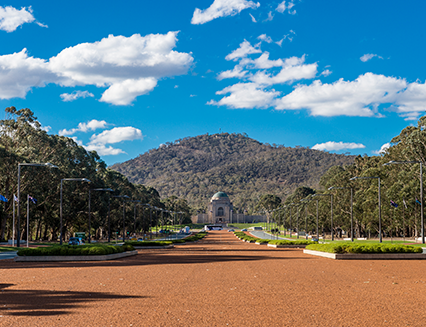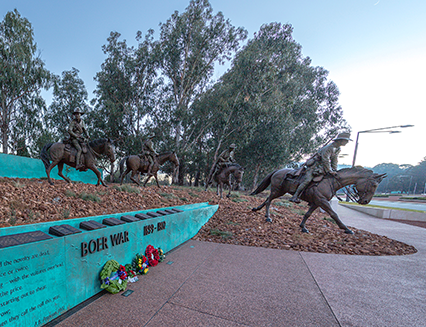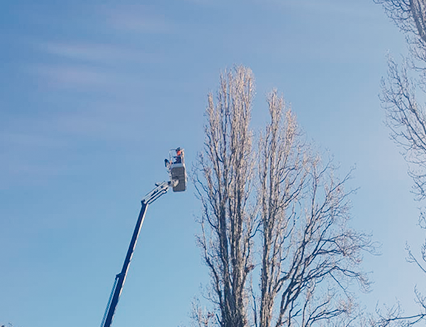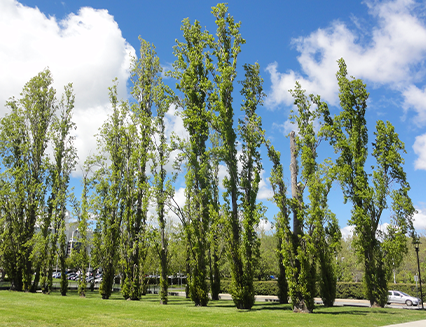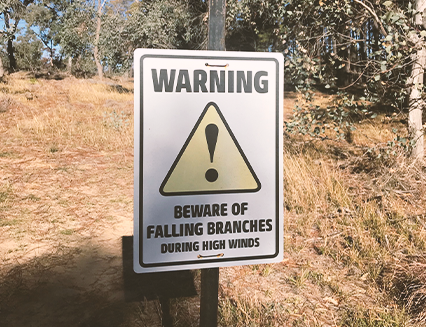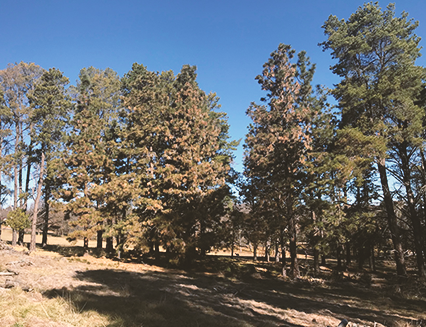Dunrossil Drive
Senescing of mass plantings
Dunrossil Drive includes a significant landscape of heritage value that marks the approach to Government House. Charles Weston devised and planted the grand avenue with a row of elm trees either side of the roadway with pine trees beyond. The elm trees were planted as early as 1918, and the pine trees were planted in 1927-28. Eighty years later, the majority of the pine trees were dead or dying, resulting in weakened or falling trees and branches. This area is popular with local residents and the condition of the pines was creating a public safety risk.
The pine trees were removed in two stages in 2013 and 2015/16, followed by replanting 12-18 months after each removal stage. The central avenue of elm trees has been strengthened with evergreen oaks (Quercus englemannii) to enhance the year-round avenue effect, and the dense planting of Pinus radiata has been replaced with a more open planting of Pinus canariensis. The new planting creates a more open parkland setting, better meeting the needs of local residents, improving maintenance standards and better accommodating nearby events.
